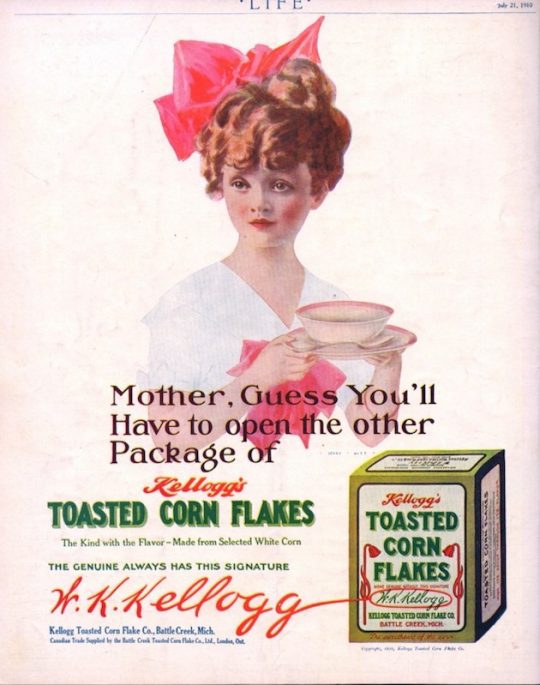Over the weekend, the Wall Street Journal featured a review of The Kelloggs: The Battling Brothers of Battle Creek. "First, it turns out that the turn-of-the-last-century origin and evolution of the cereal industry was a very nasty and unpleasant bit of business," writes reviewer Bryan Burroughs. "And second, well, let’s just say that getting to the bottom of this long, tangled story requires more discussion of gastroenterology than you may desire with your breakfast."
Mind you, the story of Dr. John Kellogg and his sanitarium isn’t new. T.C. Boyle wrote The Road to Wellville in 1993 (it became a movie the following year, starring Anthony Hopkins and Matthew Broderick). But Howard Markel’s new book brings to light more of that feud between the brothers. Dr. Kellogg was intensely focused on his patients, many of whom suffered from dyspepsia, described by the reviewer as "a medley of gas, diarrhea, heartburn and upset stomach." Will was more concerned with selling corn flakes—and rightly so: The brothers had a hit with "easily digestible corn cereal" but later failed to deal with Charles William Post, their archrival. Post offered something else—shredded wheat. In 1949 Post came out with Sugar Crisp, another colossal hit. (Kellogg’s answer? Frosted Flakes. Boom!)
In any event, had John been left solely in charge of the corn flake company, he would have run it into the ground, becoming a (pardon the pun) cereal killer. Fortunately Will took charge and turned Kellogg’s into a powerhouse. "In the end," writes Burroughs, "the Kellogg brothers’ fortunes reversed. Will, dour and lonely, became one of the country’s wealthiest men, built a mansion in Southern California and collected a stable of thoroughbred racehorses before dying in 1949. John, though internationally famous well into the 1930s, slowly lost many of his holdings, including, in 1920, the sanitarium itself."
John Kellogg was certainly the stranger of the two. As Burroughs mentions, "In his last years he would entertain dinner guests by passing around containers of his own byproducts." In a wonderful study of supermarket culture, Grocery: The Buying and Selling of Food in America, Michael Ruhlman explains, "Kellogg’s first cereal was basically an unsweetened wheat mush run through rollers and roasted." It was Will who pioneered flaked corn—and he was also apparently the first person to add sugar.
But according to Ruhlman, Dr. Kellogg wasn’t just looking for a way to cure dyspepsia. He also touted corn flakes "as a cure for the diabolical practice of masturbation."
